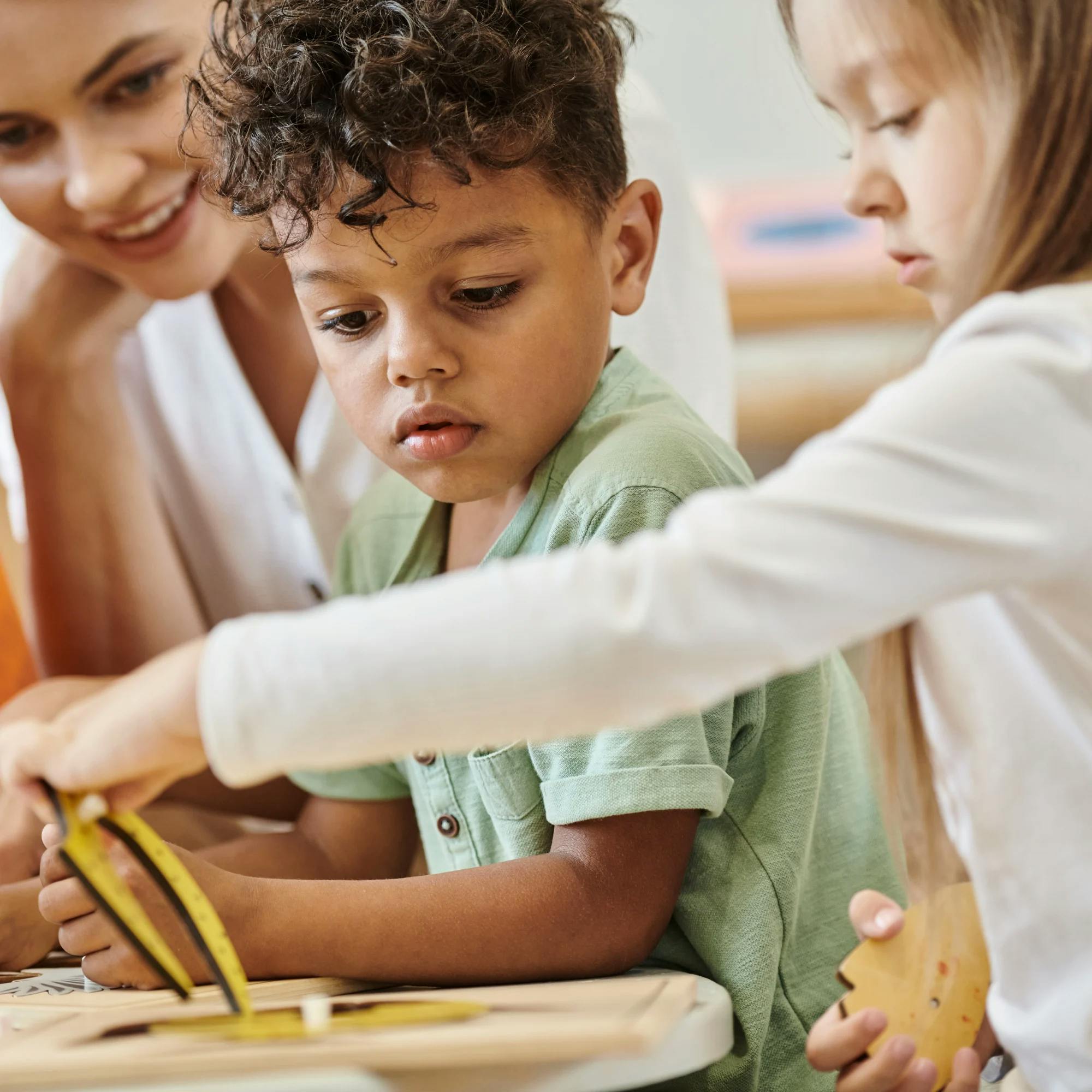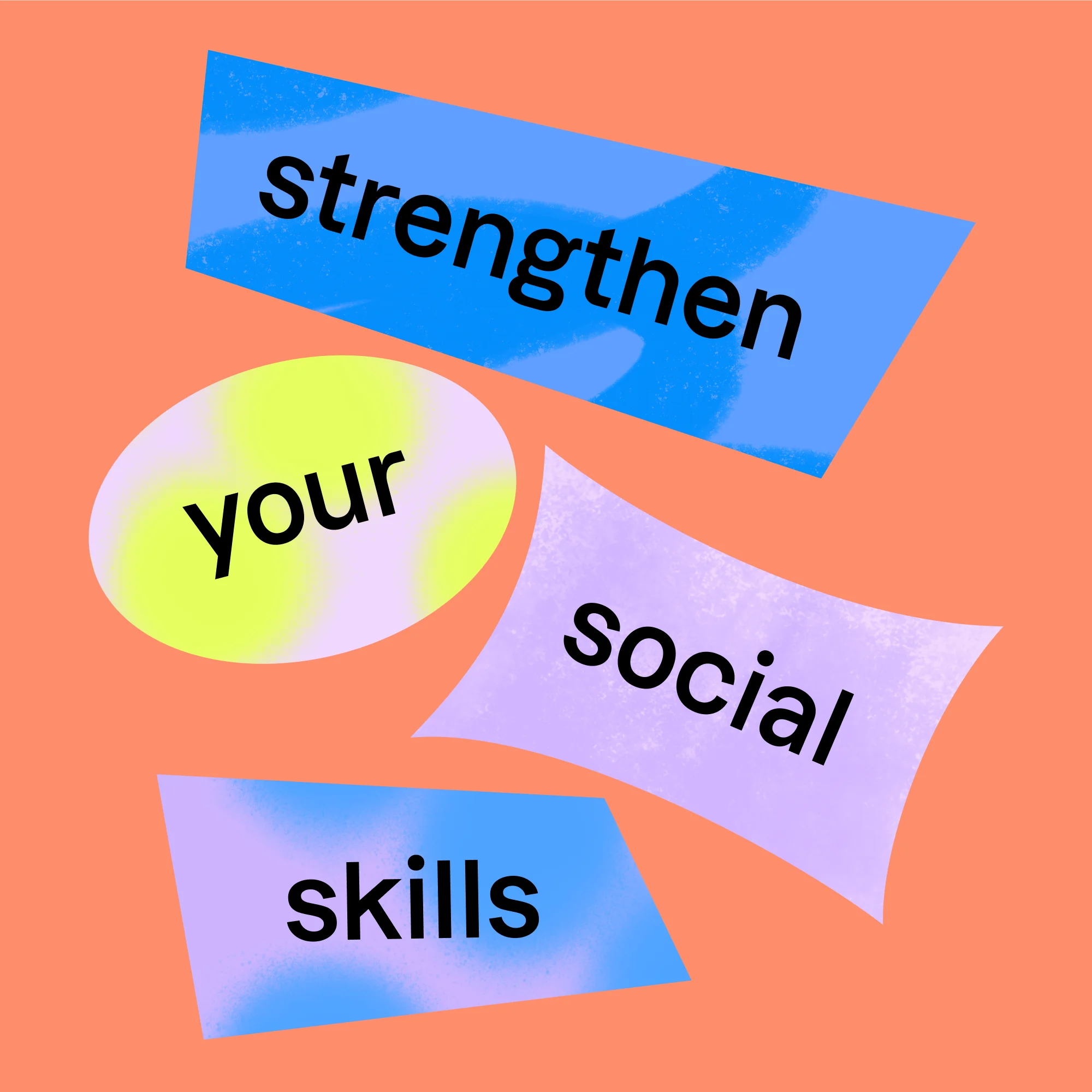“Speech therapy can help me with my social skills?!” You bet! While you may tend to associate speech therapy with a lisp or a stutter, speech therapists also help children and adults improve their social communication skills.
What are social skills?
Social communication is the ability to communicate with others verbally and nonverbally. People communicate with words, of course, but in other ways, too. Our volume, tone of voice, and word choice, as well as our gestures and facial expressions, are all ways that we express ourselves to others.
Consider these two examples of social communication:
A new friend comes over for dinner. When it’s time for dessert, your child sees your friend reach for a cookie and says, “Don’t eat that, you’ll get fatter.” You can’t believe your child said that. You are mortified!
At work, you start a conversation with a colleague and notice that he doesn’t maintain eye contact with you or stay on topic. When you look at your watch and comment on the time, ready to conclude the conversation, he keeps talking over you.
What is happening in both of these situations? Both scenarios depict a lack of social awareness and difficulty with social skills. Speech therapists refer to this as pragmatics. Pragmatics consist of the “social rules” we follow that make it easier to communicate with each other.


What causes problems with social communication?
Social communication begins to develop early in life, alongside speech and language development. A social communication disorder can quickly become more apparent as a child gets older and is placed in a variety of more complex social environments, like playing with other children or working in groups at school. A child with limited social skills may say the wrong thing or behave in the “wrong way” when speaking with others. In that case, they may have a social communication disorder.
As of today, there is no definite cause of social communication disorders. However, studies have shown that a child may have a higher risk of a social communication disorder if there is a family history of autism, learning disabilities, or some other types of communication disorders. In addition, problems with social pragmatics often present alongside other types of disorders, such as delayed speech, ADHD, or an intellectual development disorder.


How does speech therapy help with social skills?
Social skills matter. They affect how we form relationships and communicate with people every day in school, at work, and in social situations. Speech-language therapy is the main treatment for social communication disorders.
Because every person is different, a speech therapist builds a personalized care plan tailored to their social communication strengths and weaknesses. Speech therapy involves a variety of treatment methods to improve functional communication within a variety of social settings.
A speech therapist can help people of all ages, from children to adults, who have challenges with social skills. Speech therapy for social pragmatics may focus on skills such as:
Using specific language for different reasons
Greetings (hello, goodbye)
Requesting (saying “I want a coffee, please”)
Informing (saying “I’m going to get coffee”)
Demanding (saying “Give me a coffee right now!”)
Promising (saying “I’m going to get you a coffee”)
Making appropriate eye contact during conversations
Practicing joint attention (shared attention of two or more people on the same object)
Turn-taking appropriately
Staying on topic during a conversation
Changing their language for the listener or situation, such as
Knowing when to skip details when someone already knows the topic
Communicating differently in a public place versus in the comfort of your home
Speaking differently with different people, such as children, friends, your boss, etc.
Following multi-step directions (such as “Go upstairs and bring down your swimsuit, sunscreen, and hat, then go get your water bottle in the kitchen.”)
Being mindful of personal space
Identifying emotions within oneself and with others
Regulating one’s emotions
Understanding humor and how to tell a joke
Understanding sarcasm and how to best use sarcasm in conversations
Knowing when it’s the right time to change the topic in conversation
Understanding idioms, such as “It’s raining cats and dogs” or “Let’s call it a day”


What does speech therapy for social communication look like?
Some common examples of speech therapy methods for social communication include:
Video instruction: Watching recordings of people in conversation that provide a model of desired behaviors
Comic book conversations: Showing conversations between people in an illustrated form to reinforce behaviors
Role-playing: Holding mock conversations that focus on different topics, conversational partners, and social settings
Scripted responses: Creating scripted responses that can help people practice starting or joining conversations


3 ways to help your child improve their social skills
If you’re the parent or caregiver of a child with a social communication disorder, here are some ways you can help your child:
1 Role-play conversations and scenarios
Have your child pretend to have the same conversation with different people. For example, how would your child explain their favorite game to a baby, or a teacher, or their grandparents? Discuss what’s appropriate to say and not say depending on each listener and situation.
2 Use everyday situations
Practice staying on topic when talking about school or things that interest your child. To practice asking questions, have your child ask family members what they want to eat for dinner. Practice greetings when starting and ending a conversation. This can include saying “hi” and “bye,” waving, and extending your hand for a handshake.
3 Show how nonverbal cues are important
Look at pictures of people with different emotions and discuss how the person may feel. Discuss what it means if a person’s face doesn’t match what they’re saying. This is a great activity to try when reading or watching a show with your child. You can also try offering your child a series of nonverbal cues and having them tell you what they mean. For example, you could smile, cross your arms, roll your eyes, or look away.
There are many benefits to finding support for social language, whether your child has a social communication disorder or you’re an adult who’d like to brush up on your social skills. The ways people speak to each other can be complex, but speech therapy is an effective way to improve social communication in people of all ages.
How Expressable Can Help
Concerned your child isn't reaching age-expected milestones? Looking for communication support from a professional? Expressable is a national online speech therapy practice serving children and adults. We treat all major areas of communication and feeding, offer flexible hours including evenings and weekends, and accept most major health insurance plans. We’re proud to have earned more than 3,000 5-star reviews from our clients (4.9/5 average).
Our therapy model is centered on parent and caregiver involvement. Research proves that empowering caregivers to participate in their loved one’s therapy leads to better outcomes. That’s why we combine live, 1-on-1 speech therapy with personalized education and home practice activities for faster progress.
Communication is more than words. It’s how we share how we feel and show who we are. We’re here to help you or your child do just that.

 Abby Barnes, M.S., CCC-SLP
Abby Barnes, M.S., CCC-SLP











